Dogs can exhibit a number of behaviors which owners often find concerning. Reactivity and aggression are two terms used to describe a number of threatening behaviors which some dogs display in the presence of triggers.
While many of the behaviors dogs exhibit during episodes of reactivity look similar to those displayed when they are being overtly aggressive, they are two very different things. It is useful for dog owners to understand the differences between these terms, and the underlying distinctions accompanying them.
Understanding the difference between reactivity and aggression is important – because both require a different approach for management and resolution. Confusing aggression and reactivity can lead to ineffective treatment. At best, this can be costly and frustrating. At worst, this can lead to more extreme behaviors. Implementing a behavioral modification strategy without fully understanding the underlying emotions which are prompting the behavior can have devastating results for the dog involved.
In this article, we will provide a detailed explanation of reactivity and aggression, the differences between the two, and how to know if your dog may be displaying one of these common behavioral concerns.
What is dog reactivity?
At its most basic level, reactivity is when dogs respond to something in their environment in an inappropriate or exaggerated manner. Reactive dogs often become strongly emotional and excited when they are exposed to a certain trigger, displaying behaviors which may appear aggressive. Some of the behaviors most commonly associated with reactivity are:
- Barking
- Lunging
- Unbreakable focus
- Whining
- Growling
When a dog is displaying reactivity, they enter a state of hyperarousal, and it can be difficult for their owners to calm them down again. Although all of the aforementioned behaviors are a normal part of every dog’s communicative repertoire, reactive dogs will demonstrate these behaviors at times where they are not appropriate.
Reactivity is often viewed as an elevated emotional state which occurs only in the presence of certain stimuli. Reactivity can be related to fear, excitement, frustration, or other emotions. In order to resolve reactivity, it is imperative to first understand the exact stimuli triggering the dog’s reaction, and then correctly identify the underlying emotion prompting the behavioral response.
Although reactivity is mostly harmless to the dog’s environment, it can become a serious issue if it isn’t managed. Reactive dogs (and their owners) often struggle to enjoy everyday activities. Owners of reactive dogs often avoid taking their dog out in public because they feel it is too stressful.
Treating reactivity is often easier than treating true aggression. Introducing behavioral modification strategies aimed at changing the underlying emotion causing the reactivity – in addition to increasing their threshold around the triggering stimulus – are often highly effective methods for improving this behavioral concern.
Body language associated with reactivity
- Intense staring at the stimuli that is difficult to break
- Losing focus on the owner/handler
- Intensified vocalization, such as growling, whining or barking
- High, fast tail wagging (in dogs who do not possess this natural tail carriage)
- Excessive excitement, panting, pacing, and pulling towards the stimuli in excitement or frustration related reactivity
- Ears folded back, tail tucking, piloerection, spooky barking and potentially jumping backwards or desperately attempting to escape the stimulus in fear related reactivity.
It is important to know that these behaviors can all have a number of different causes, and that sometimes outwardly forward reactive behavior can also be prompted by fear or discomfort.
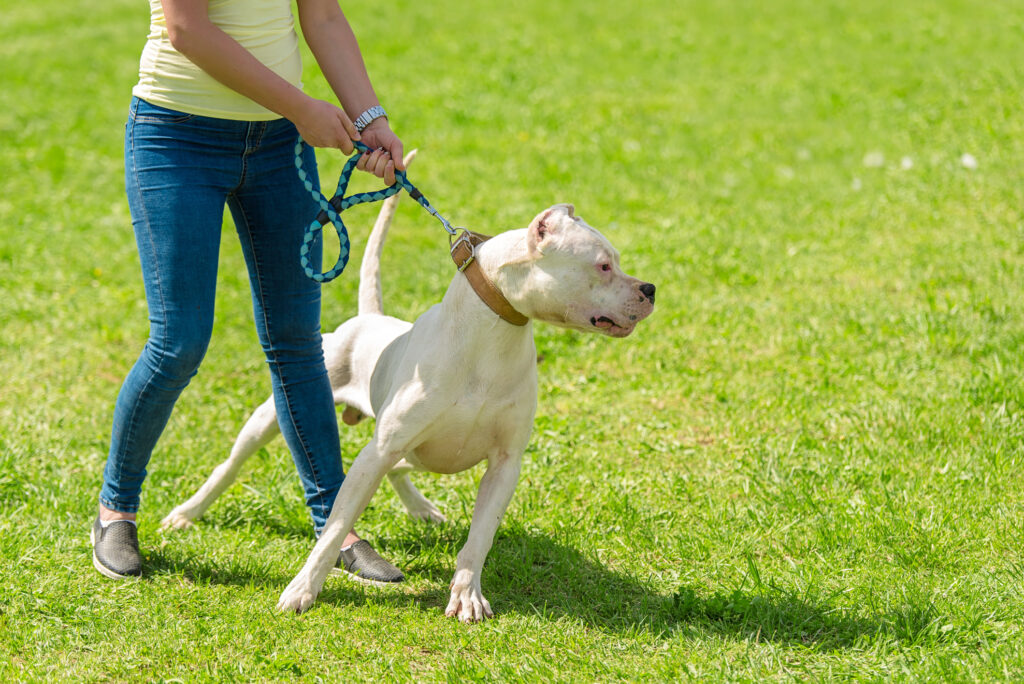
What is aggression?
Aggression occurs when a dog identifies a stimulus as a direct threat and responds to it as such. In aggression, the stimulus triggers the dog’s fight or flight response which causes them to respond physically, often in an effort to defend themself or a resource.
Even in cases of interspecies aggression (dog to dog), oftentimes aggressive episodes are triggered by one dog – or both dogs – viewing the other dog as a threat. Aggression can occur towards people, other dogs, other animals, or even objects.
The aggressive behavior can manifest in different forms. A dog displaying aggression will often exhibit a variety of behaviors indicating that they are uncomfortable with a situation, or are hyperaroused, prior to acting aggressively. Aggression responses typically include physical contact with a trigger, including:
- Muzzle punching
- Nipping
- Biting
- A combination of these responses.
Aggressive displays are often prefaced by intense staring, body stiffening, and growling repeatedly while lip curling. In certain situations, such as in the case of predatory aggression, reactivity or chasing may occur prior to aggression.
Aggression in itself is complicated. It involves strong emotional responses followed by the release of certain neurotransmitters which prompt the dog to “act.” Oftentimes, aggressive dogs have developed a very strong association with a particular stimulus, or are responding to preserve something highly valuable to them. Dogs can become aggressive for a number of reasons, some of which include:
- Protection from potential physical harm
- Protection of a valuable resource, or an environment containing resources
- Instinctive predatory behavior
- Pain or health related responses
- Fear due to a lack of effective socialization
- A learned behavior which they demonstrate in order to obtain some type of reinforcer
The reasons why a dog may be displaying aggression can be significantly more complex, but oftentimes a perceived threat is the culprit for their behavior.
Associating a triggering stimuli with positive experiences is one way to improve or resolve fear-based aggression; however, this must be accomplished very slowly and systematically, or the association could be made worse. Others require different approaches, depending on the underlying cause. Ideally, in aggression cases, it is imperative to ensure that a dog never has the opportunity to practice the behavior. This is especially true in instances where a behavioral modification strategy has not yet been implemented.
Understanding what is causing a dog’s aggression and implementing an appropriate behavior modification and management strategy can make a significant positive impact on the behavioral responses of an “aggressive” dog. Treating aggression as early as possible is critical to avoid any dopamine release which may be associated with the behavior, stronger associations being made with the triggering stimulus, and strengthening of the neurological pathways responsible for creating habits. The more opportunities a dog has to practice a behavior, the longer it will usually take to change.
Body language indicative of “aggressive” behavior
- Snarling/baring teeth at the stimuli/threat
- Attempts to make physical contact – lunging or charging
- Stiff body posture with stiff or raised tail (in dogs who do not naturally display these tail carriages)
- Ears straight back or very far forward
- Intense staring
- Snapping or nipping
- Biting
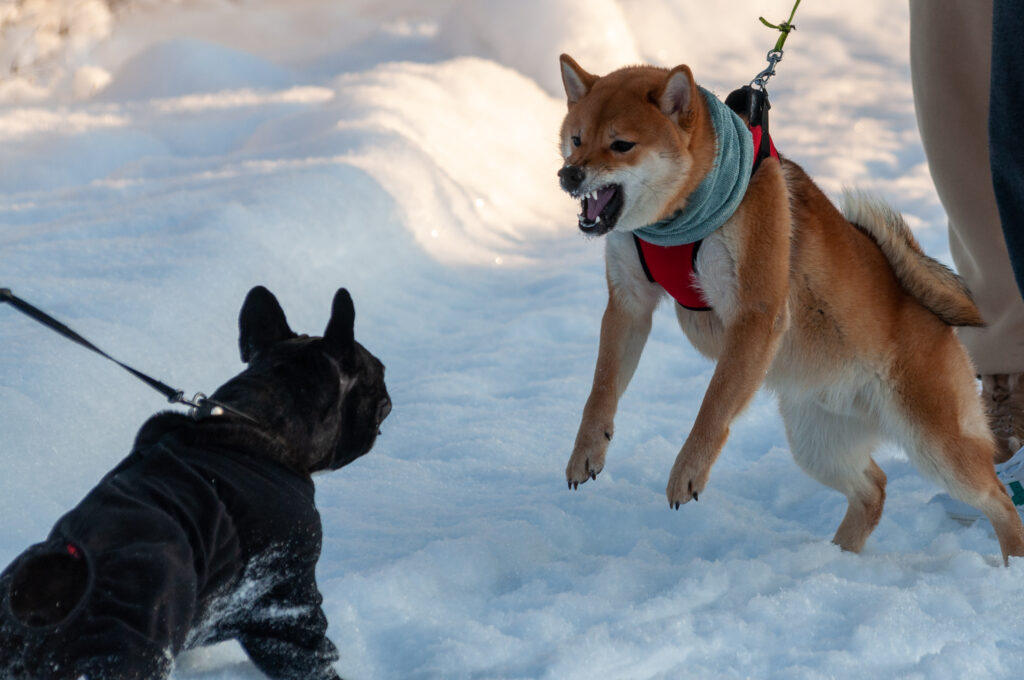
The difference between reactivity and aggression
Both reactivity and aggression stem from a heightened emotional response, but there are some obvious (and also subtle) differences between the two.
A reactive dog responds to a stimuli exaggeratedly because they are hyperaroused, but they are not typically attempting to cause physical harm. True aggression is triggered by a physiological stress response (fight or flight), which causes an animal to respond in any manner necessary to stop the perceived threat.
Correctly identifying a dog’s body language is in important component of recognizing reactivity vs. aggression. Although they can appear similar, looking for certain behavioral indicators is key.
Reactive dogs aren’t usually intending to cause harm to their trigger, so they aren’t actively looking for ways to attack or protect themselves. They may stiffen up their posture and continuously bark, growl or lunge to express their emotional state, but will not attempt to snap at or bite the trigger.
Unfortunately, behavior is complex, and reactivity can quickly become a linear path to aggression if not interrupted. If a dog has the chance to frequently practice reactive behavior, they can develop more frustration. Frustration is a reaction to stress, and as an animal becomes increasingly stressed, the more likely it is that their brain will begin to perceive a stimulus as threatening. In cases of fear, the fear association may become so strong that an animal feels the need to physically defend themselves.
For the safety of the dog and the trigger, it is crucial that reactivity is resolved before it turns into aggression.
Finally, just because a dog displays signs of aggression, or acts aggressively in a certain context, does not mean that they are aggressive.
How can you help your dog?
If your dog is reactive or aggressive, there are things that you can do to help change their emotional state and improve the concerning behaviors.
- The first step in improving these behaviors is to recognize what triggers your dog – and when. Watch for early signs of arousal such as high, fast tail movements, intense staring, and physical indications of stress, as outlined in the lists above.
- When your dog reacts in this way, redirect your dog. Avoid approaching what triggers them in an attempt to make your dog understand what they are responding to isn’t actually a “threat”. This can overwhelm your dog and result in increasingly heightened responses. Instead, keep your dog as far away from the trigger as possible, and redirect them with high value reinforcers.
- Avoid yelling at your dog to stop them from expressing their emotions. Talk in a soft, soothing voice as you redirect your dog away from the stimulus.
- Try to ensure that your dog never reaches the point where they are too aroused to respond to you. The key is to work on reducing the behavior while the dog is still capable of thinking rationally.
Once you have identified what exactly is triggering your dog, and their threshold (the distance from the stimulus where the initial signs of arousal begin), you can implement a behavioral strategy such as systematic desensitization, habituation, classical counterconditioning, or another proven form of association management.
In more severe cases, professional behavioral assistance is the safest and most effective way to resolve reactivity and aggression. In any instance where a dog has just started demonstrating reactivity or aggression, professional help can also help ensure that the behavior does not have the opportunity to advance. At Highland Canine, our trainers across the nation have helped hundreds of dogs with behavioral concerns through our Behavior Modification programs.
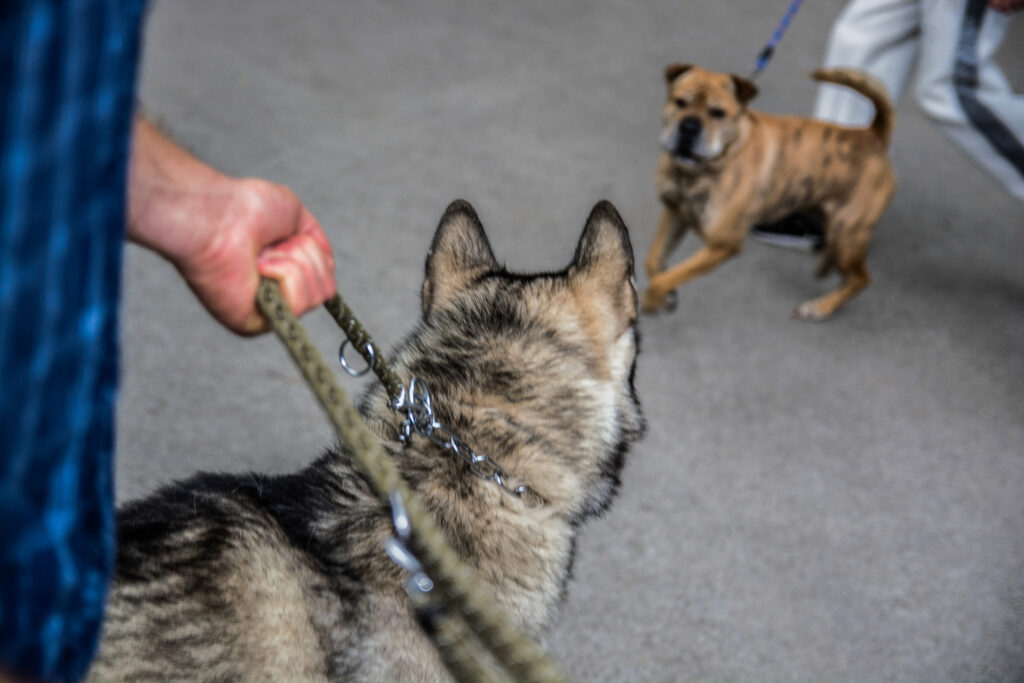
In conclusion
Knowing the differences between reactivity and aggression is key to understanding the severity of the behavior and how to effectively resolve it. The ability to distinguish the responses associated with these behaviors enable owners to take action before emotional elevation occurs.
Canine behavior is complex, and if you are unsure of how to proceed, contacting a professional dog trainer will prevent the unwanted behavior from escalating.
Remember – reactive dogs are not always aggressive, and aggressive responses do not always mean the dog is inherently aggressive. Understanding the underlying cause of your dog’s behavior is imperative to helping them live a happy, stress-free life.
Related posts

Why Has Your Dog Started Misbehaving? [9 Potential Reasons]
If your dog has started to misbehave, take a look at this article for explanations as to why this might be the case.
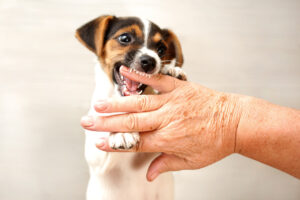
All You Need To Know About Puppy Nipping
What is puppy nipping, and how can you manage this frustrating stage of your puppy’s life? Learn all about it in this article.

How To Manage Your Dog’s Barking
Frustrated with your dog’s incessant barking? Discover strategies for identifying and managing your dog’s barking.

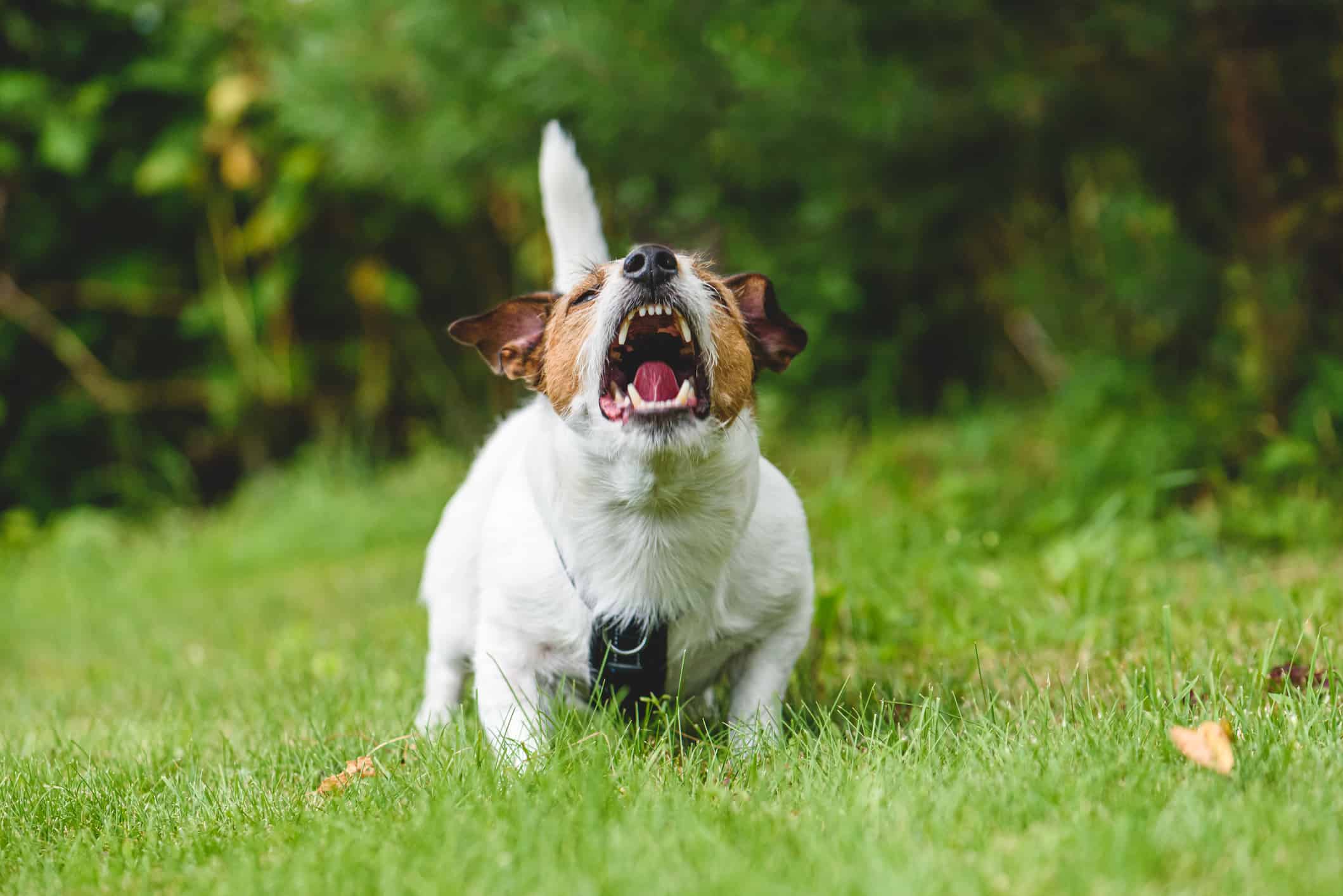
You must be logged in to post a comment.